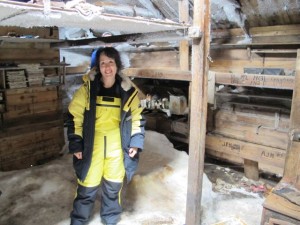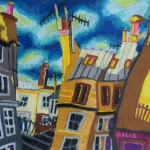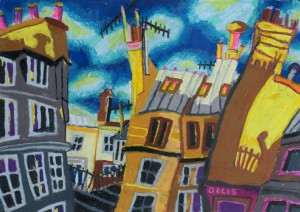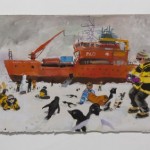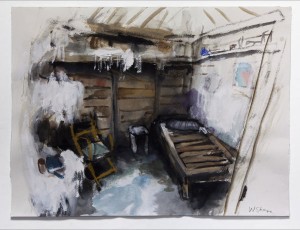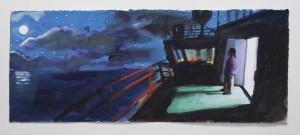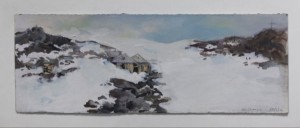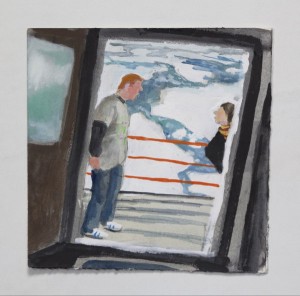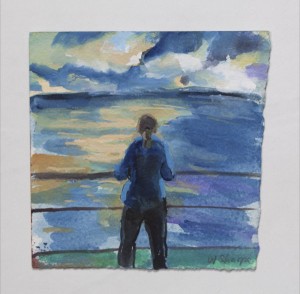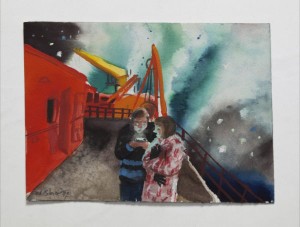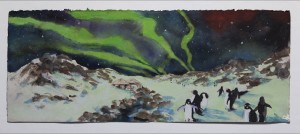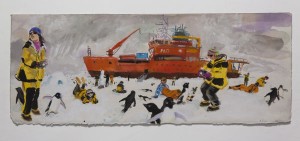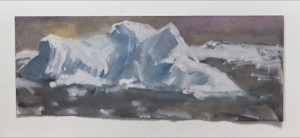Archive for July, 2012
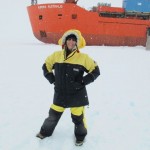
Wendy Sharpe sails to Antarctica with the Mawson Centenary Expedition
Jul 21st
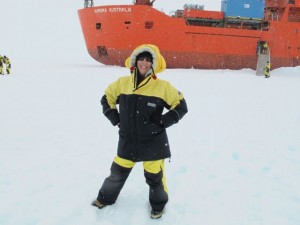
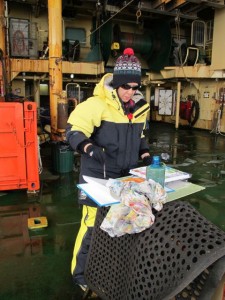
I had a wonderful talk to Wendy Sharpe in her studio this week, about her six weeks on board the Aurora Australis in January-February this year [2012], as an invited artists with the Mawson centenary expedition to Antarctica.
Wendy had been invited by David Jensen, chairman and CEO of the Mawson’s Huts Foundation, to help promote the Foundation’s work in conserving the historic huts and to promote the scientific program being undertaken by the Australian Antarctic Division. The Aurora Australis is the AAD’s research and supply vessel, and on board the ship Wendy had a studio on the bridge which she shared with the AAD’s meteorological officer. It provided a brilliant view of the landscape she was seeing for the first time in her life.
We pored over the myriad works on paper on her studio floor, with Wendy enthusing about the extraordinary landscape she saw, and talking with great animation and affection about the thousands of penguins which inhabit that extraordinarily hostile environment.
Many of the sketches were done panorama-style on fold-out sketchbooks embossed with Wendy’s name in silver on the front. She had the sketchbooks printed especially for the Antarctic voyage, and their covers were a gorgeous sky blue.
Virtually all the work we were looking at had been done in Antarctica, with just a few large oil paintings done later in her studio. This latter category includes the self-portrait which became a finalist in this year’s Archibald Prize, and which is still on tour with the rest of the Archibald exhibition. It also includes the refrigerator which will be sold off to benefit the Mawson’s Huts Foundation, which now carries pictures of penguins and explorers’ huts courtesy of Wendy.
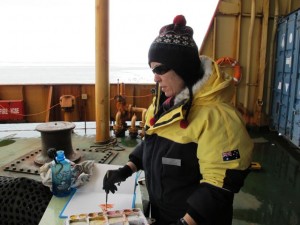
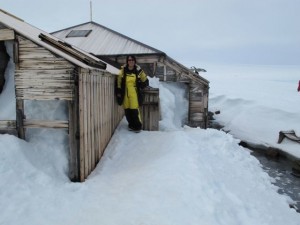
Luckily, given that the southern oceans are some of the most treacherous in the world, Wendy was only seasick for a day. One of her panorama sketches includes her shared cabin, and you can see Wendy’s dark hair on the pillow as she curls up in her bunk with pretty bad mal de mer. Luckily, she soon recovered. A really bad bout of seasickness could have wrecked the journey for her.
“We just lay there all day. It wasn’t that bad,” Wendy said.
The Adele penguins which are native to the Antarctic feature comically in many of Wendy’s works from the voyage.
“That was one of the most amazing things in my whole life,” she said.
Despite looking like cookie-cutters had created them, the penguins managed to be hilariously individualistic, changing their body shapes to echo their innermost thoughts, be they aggressive or playful or whatever was going through their minds. Wendy never tired of watching the penguins’ antics, and her delight in the knee-high creatures is translated into her sketches and paintings from the trip.
Although humans are not allowed to approach the Adele penguins, Wendy saw how relaxed they were around people, even approaching some members of the Aurora Australis crew and pecking their boots. “They’re not afraid of us, because their only predator is a leopard seal and [the leopard seals are] in the water,” she said.
She loved the way the penguins would shoot out of the water head-first, and land on the ice on their feet. She was also seduced by the gorgeous aqua colour of the ice floes just under the surface of the water.
Entering Mawson’s hut, Sharpe was overwhelmed by the sense of history. “They still have some of the things from that original expedition — clothes, candles, paperback novels,” she said.
She ventured into Mawson’s bedroom and expedition photographer Frank Hurley’s darkroom. Many things were intact, although snow drifts covered much of the flooring.
“It’s kind of snap frozen,” she said.
One of the most remarkable moments for Sharpe was a graphic demonstration by scientists of the pressure exerted on objects at pelagic depths. In the experiment, Wendy painted on a six-pack Esky which was then lowered into the ocean to a depth of five kilometres. When the Esky was brought back to the surface, it was intact. But it had shrunk dramatically, and would barely have held one can. “They often do foam cups,” Wendy said. “This was a six-pack Esky.”
Wendy’s exhibition, Wendy’s Sharpe’s Antarctica, is on at the Australian National Maritime Museum at Darling Harbour in Sydney from Monday July 23 to Saturday July 28. All the artworks are for sale.
Elizabeth Fortescue, July 21, 2012
